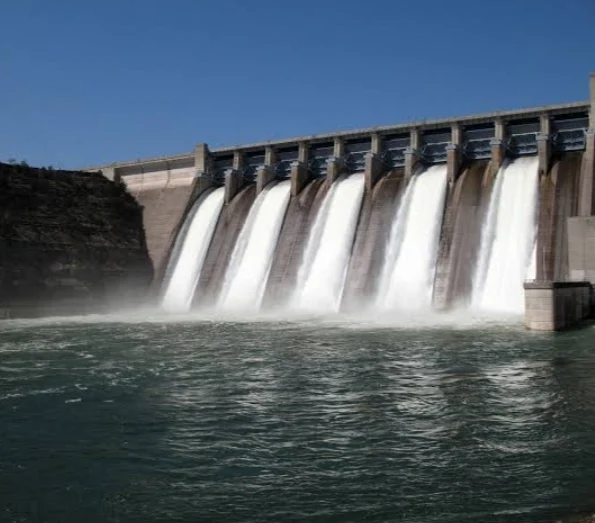Hydro Energy in Indonesia: Powering the Archipelago with Renewables
Indonesia, an archipelago nation blessed with abundant rainfall and diverse topography, possesses immense potential for hydro energy.
Capacity of Hydro Energy in Indonesia
Note: The capacity of hydro energy in Indonesia is constantly evolving due to new projects coming online and existing ones undergoing upgrades. For the most accurate and up-to-date figures, please refer to recent reports from the Indonesian government or energy agencies.
Here's a table summarizing the estimated capacity of hydro energy in Indonesia:
| Region | Estimated Capacity (MW) |
|---|---|
| Sumatra | 2,500 |
| Java | 3,500 |
| Kalimantan | 1,000 |
| Sulawesi | 500 |
| Other Islands | 500 |
| Total | 8,000 (approximately) |
Key Points:
- Java and Sumatra: These islands have the highest concentration of hydropower plants due to their abundant rivers and mountainous terrain.
- Ongoing Development: Indonesia is actively pursuing new hydropower projects to meet its growing energy demand and reduce its reliance on fossil fuels.
- Potential for Expansion: The country's vast hydroelectric potential suggests that there is significant room for growth in the future.
This clean, reliable source of electricity plays a crucial role in securing a sustainable future for the country. This article delves into the current state of hydro energy in Indonesia, exploring its potential, challenges, and prospects.
Current Status:
- Installed Capacity: As of 2022, Indonesia boasts a total installed hydro power capacity of 6,688.9 megawatts (MW), accounting for 53.3% of the nation's total renewable energy capacity. This makes it the largest contributor among renewables, outpacing bioenergy, solar, and wind power.
- Energy Generation: Hydropower contributes approximately 7% of Indonesia's overall electricity mix, generating around 20,000 GWh in 2020.
- Distribution: Hydropower plants are scattered across the archipelago, with significant concentrations in Sumatra, Java, and Kalimantan. Major projects include the Cirata (1,008 MW), PLTA Asahan 1 (645 MW), and PHEP Muara Tawar (947 MW) plants.
Untapped Potential:
- Estimated Potential: Studies suggest Indonesia possesses a theoretical hydro energy potential of 94,627 MW, distributed across over 52,566 sites. This implies a 14-fold increase over the current installed capacity.
- Run-of-River Systems: Much of this potential lies in run-of-river systems, smaller projects utilizing natural water flow without requiring large dams. These hold promise for decentralized energy generation in remote areas.
- Kayan Cascade Project: One example of large-scale potential is the Kayan Cascade Project in Kalimantan, projected to generate 9,100 MW upon completion. It aims to power the new capital city, Nusantara, with 80% renewable energy.
Challenges and Considerations:
- Environmental Impact: While considered clean, large-scale hydropower projects can disrupt ecosystems and displace communities. Careful environmental impact assessments and sustainable practices are crucial.
- Social Impact: Resettlement of communities affected by dam construction requires sensitive handling and long-term support. Social responsibility and community engagement are vital.
- Financing and Development: Investing in large-scale projects requires significant capital and can be complex. Public-private partnerships and innovative financing models are needed.
- Transmission Infrastructure: Expanding the transmission grid is essential to connect remote hydropower plants to population centers. Efficient grid development is crucial.
Prospects and Future Outlook
- Government's Commitment: The Indonesian government aims to increase the share of renewables in the energy mix to 31% by 2050. Hydropower is expected to play a significant role in achieving this target.
- Focus on Mini-Hydropower: Development of mini-hydropower plants (below 10 MW) is gaining traction, providing clean energy access to remote communities and reducing reliance on fossil fuels.
- Technological Advancements: Advancements in hydro turbine technology and pumped storage solutions offer opportunities for improved efficiency and flexibility.
- Regional Cooperation: Collaborations with neighboring countries for cross-border hydropower projects can unlock further potential and enhance regional energy security.
Table: Major Hydropower Plants in Indonesia:
| Plant Name | Installed Capacity (MW) | Location | Year Commissioned |
|---|---|---|---|
| Cirata | 1,008 | West Java | 1987 |
| PLTA Asahan 1 | 645 | North Sumatra | 1982 |
| PHEP Muara Tawar | 947 | East Kalimantan | 2019 |
| Saguling | 510 | West Java | 1985 |
| PLTA Paiton | 330 | East Java | 1989 |
| Singkarak | 75 | West Sumatra | 2008 |
| PHEP Sutami | 510 | South Sulawesi | 2014 |
Conclusion:
Hydro energy offers a reliable and clean source of power for Indonesia's growing energy needs. While challenges exist, concerted efforts towards sustainable development, community engagement, and technological advancements can unlock the vast potential of this renewable resource. By harnessing the power of its flowing waters, Indonesia can pave the way for a brighter, greener future.



